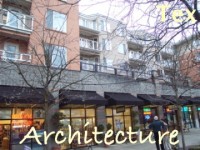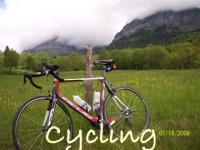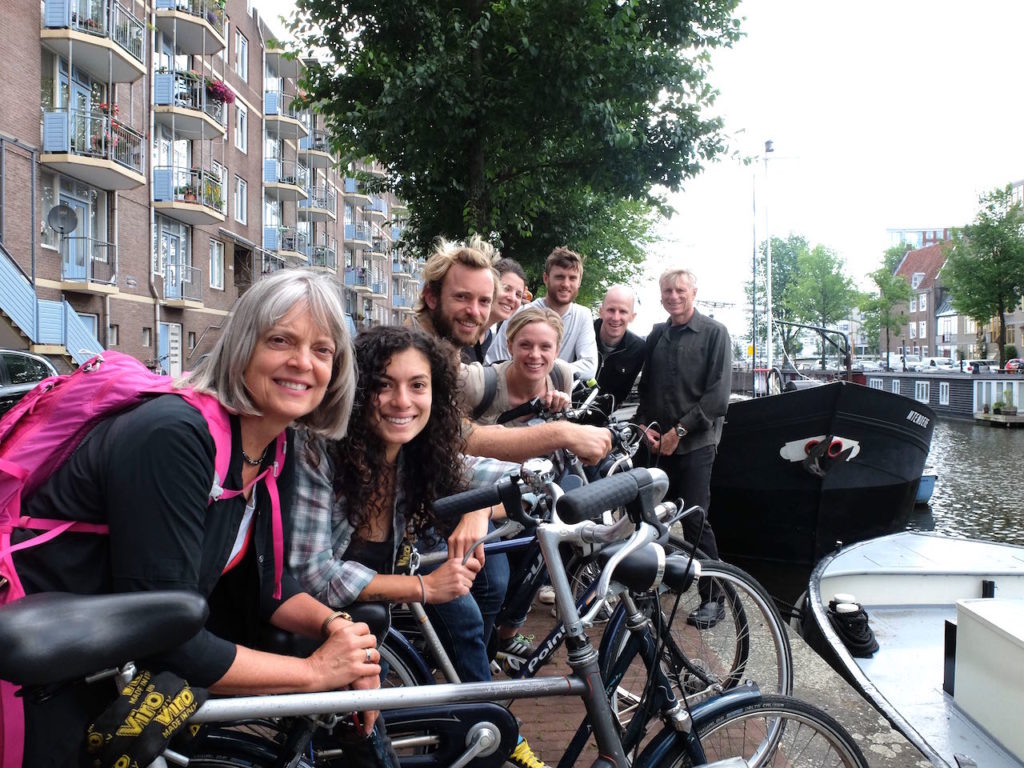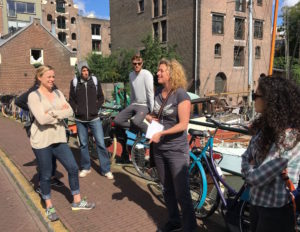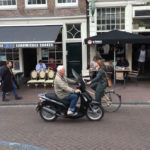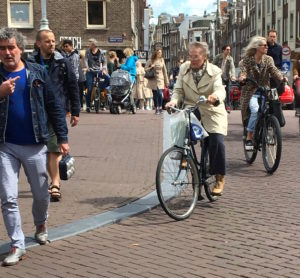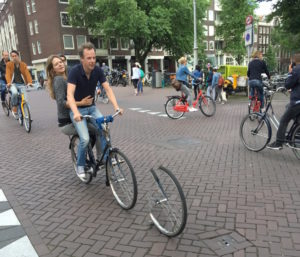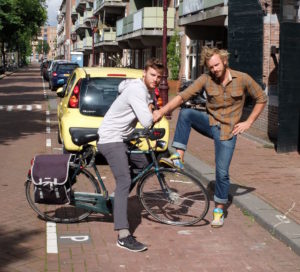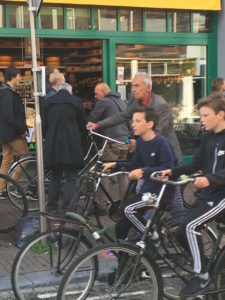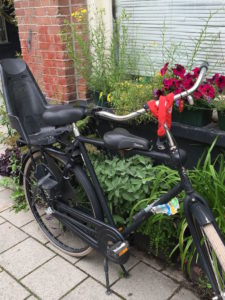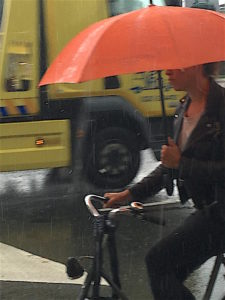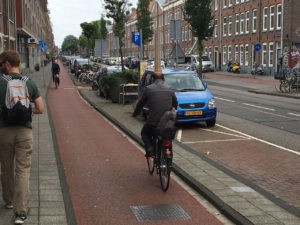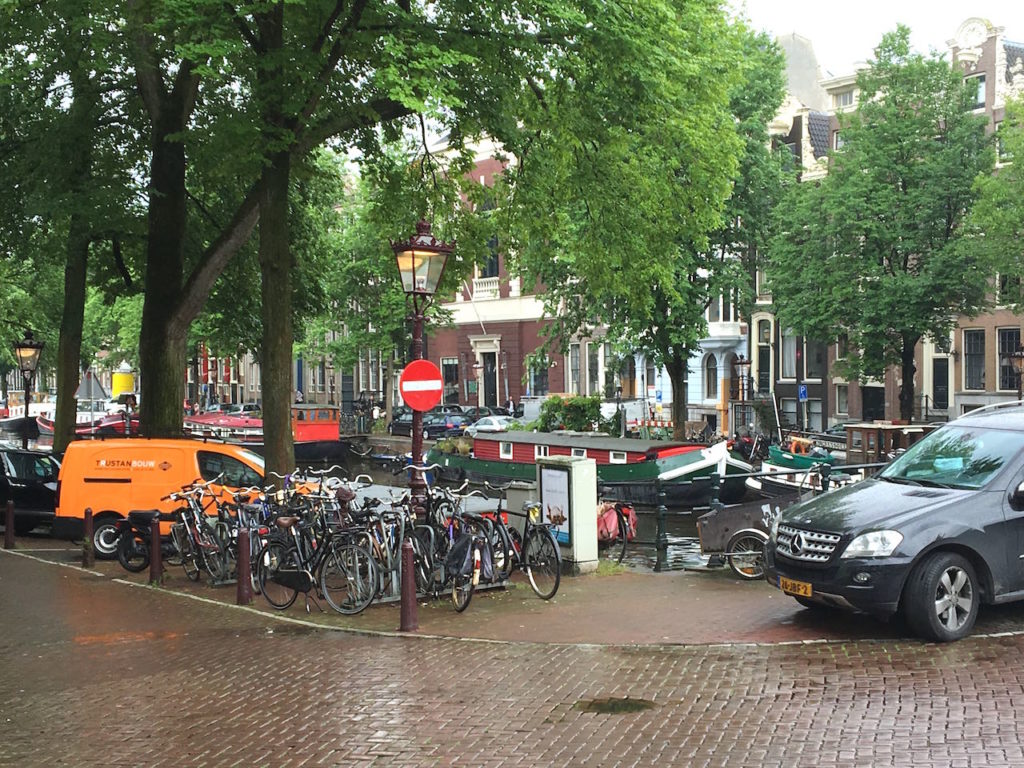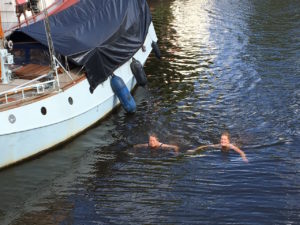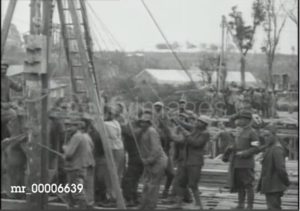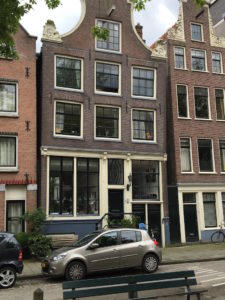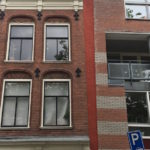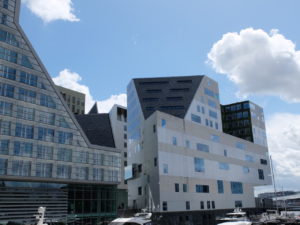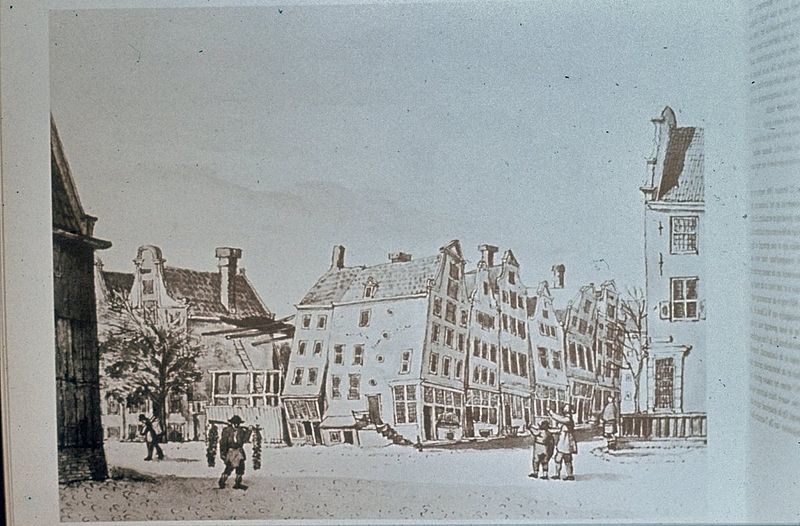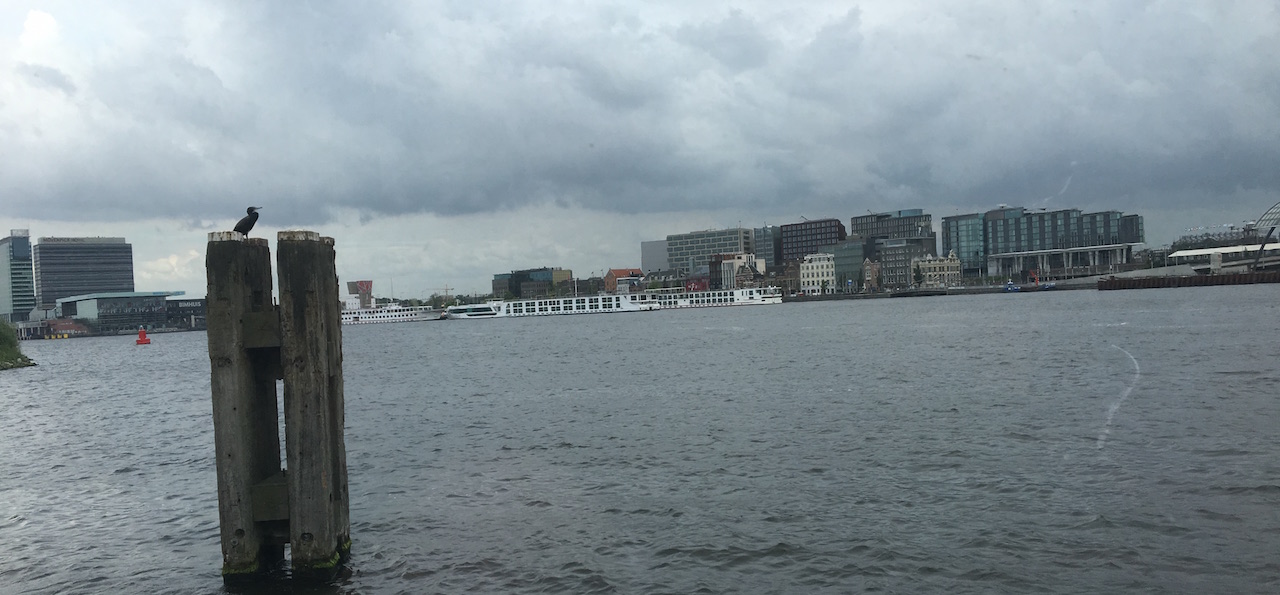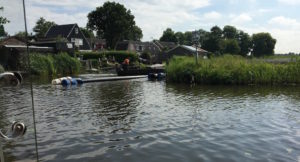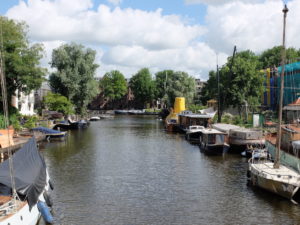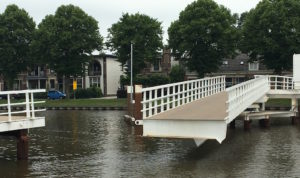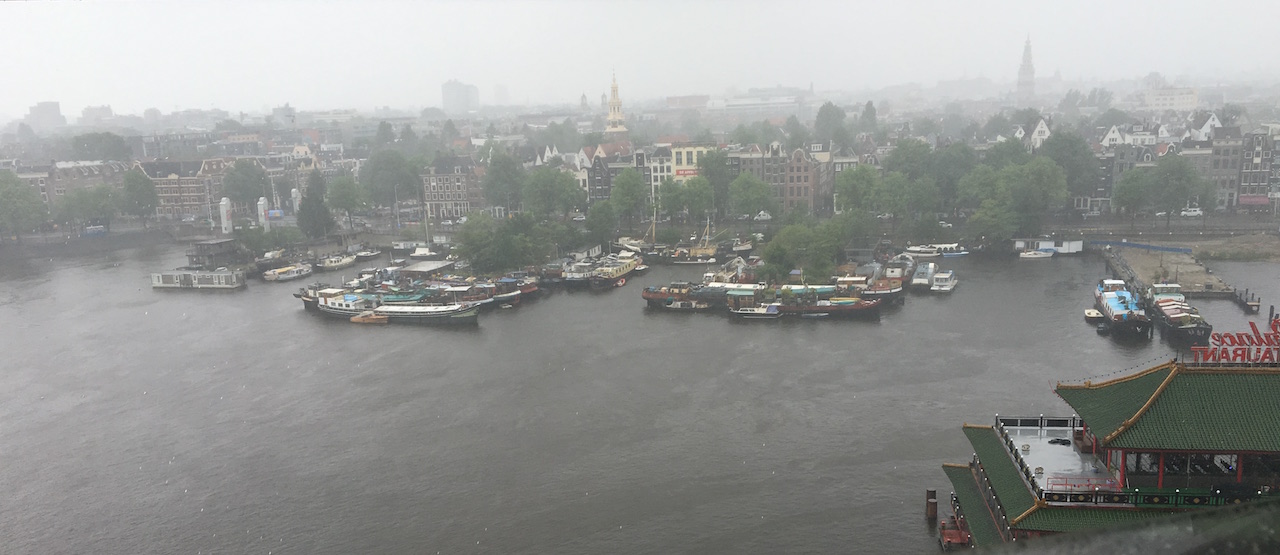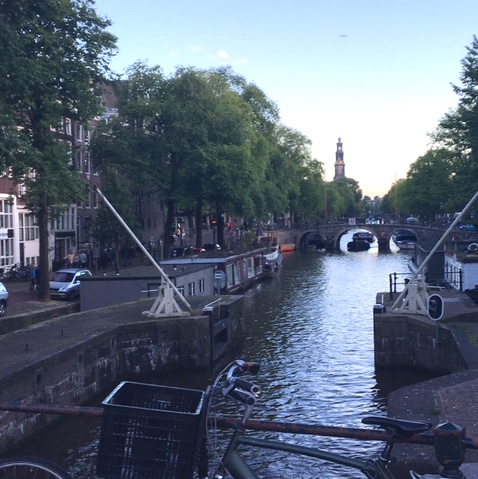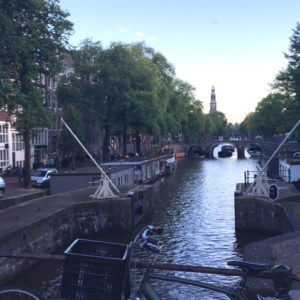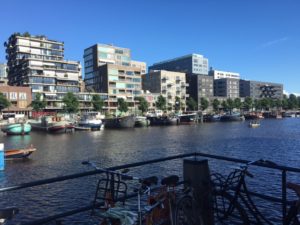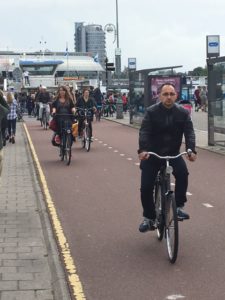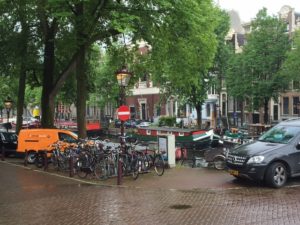Riding a bike around Amsterdam can be daunting at first as one learns the basic road rules. Then it becomes exhilarating. You can get anywhere quickly without delays.
The basic road rules, as outsiders say, is “there are no rules”. This is not true. There are many clear rules regarding right-of-way and traffic signals, and bikes have protected bike lanes and directional privileges everywhere. One of the basic rules is that you may break any rule on a bike as long as you don’t collide with someone else. If you give the car/cyclist/motorbike time to avoid a collision, you’re OK. If not, stop. Whoever’s behind you better stop also. Instantly. Anticipate everything that might happen in front of you so you can stop on a dime, or swerve onto a sidewalk, or speed through a gap.
The roads that line the concentric canals are fun. They’re paved with brick, one-way for cars but two-way for bikes, and they go up and down at the bridges. Service vehicles can be parked in the middle of them, leaving a 1 m. gap to cruise through to the left or right. Pedestrians wander down the middle of the roads. Faster bikes pass on the left and the right. Scenic canals line the way if you have time to look.
Amsterdam biking is akin to mountain biking. It requires the same skills. Instead of dodging rocks and tree roots, you dodge road hazards and bikes and walkers. You are locked in. You need quick power to get through a gap, then a combo braking/turning maneuver to avoid a pavement gap, a bunny hop to get up a curb, cold guts to face down a car reluctant to give way. Time speeds along, the scenery is amazing and you arrive at your destination before you ever thought you could. You even ride with low tire pressure for traction and cushioning. No one wears helmets, though, except American tour groups constrained by liability insurance.
We rented bikes after the first couple days for the duration of our stay, and even the novice bike riders among us enjoyed the freedom and challenge of two wheels. It’s the quintessential Amsterdammer way to experience the city, although our bike helmets and timidity assured we wouldn’t be mistaken for natives.


